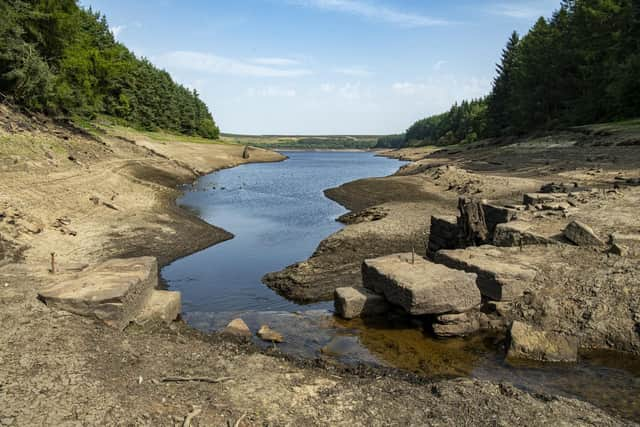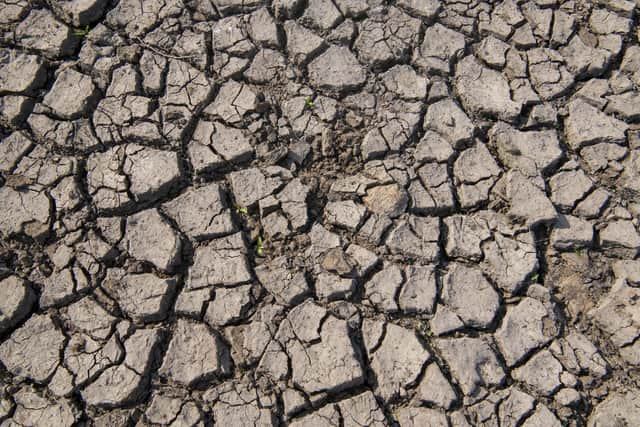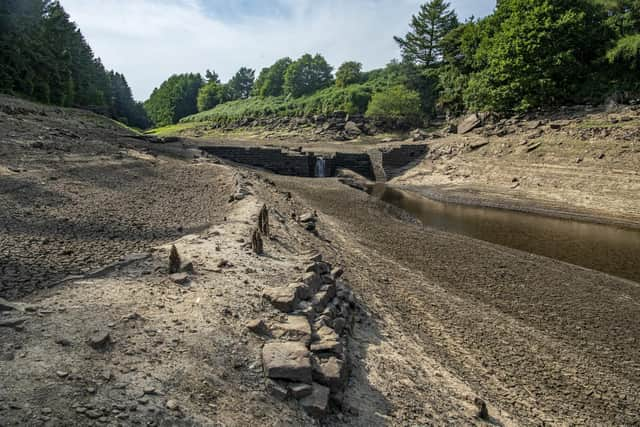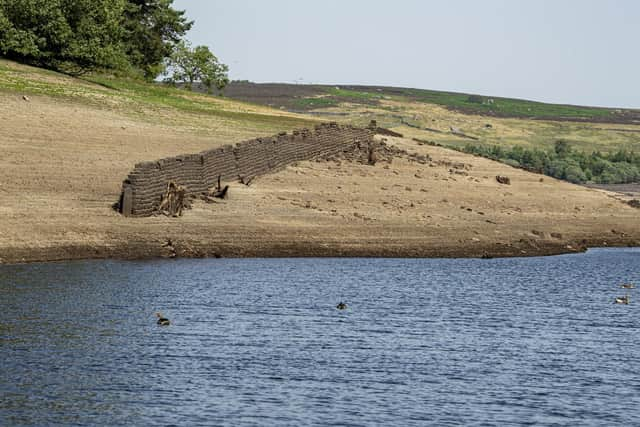Remains of lost village revealed in reservoir shallows as Yorkshire sees highest water use in 15 years
There is no evidence to support such folklore, even as the village of West End’s boundaries are laid bare, and as long-felled tree stumps can once more be seen on the reservoir’s dry, cracked bed.
But as Yorkshire Water confirms, the past few days have seen the highest water use in 15 years. And the firm reveals it is moving water around the region to try and balance the impact.
Advertisement
Hide AdAdvertisement
Hide AdThe Environment Agency this week moved to impose a drought order to “slow the flow” in Holm-firth’s Holme Styes reservoir, warning that without it plants and animals could die.


Now pleas have been issued to use water wisely, to let lawns go brown and to turn off the garden hose to reduce the likelihood of restrictions for the region later in the year.
Yorkshire Water’s Emily Brady said: “It’s been a very dry spring and summer. Our reservoirs are feeling the impact and levels do continue to decrease so we’re moving water around the region to try and balance the impact.
“As the ground is incredibly dry, we would need a few weeks of wet weather to help reservoir stocks return to their usual levels. It’s really important people keep taking steps to save water throughout the summer, whatever the weather.”


Advertisement
Hide AdAdvertisement
Hide AdAs Yorkshire was hit by the peak of the heatwave on Monday and Tuesday, with temperatures topping 40C and with wildfires breaking out across parts of the region, water use rose dramatically.
The excess each day rose by enough to supply the equivalent of all York and Leeds. Around 260m extra litres was used, taking the total to more than 3bn litres over two days.
Yorkshire Water said it was investing millions and trialling new technologies to fix leaking pipes faster and had increased the number of staff doing so to move as quickly as it could.
It is also employing marshals at some reservoirs to reinforce a no-swimming policy, urging visitors not to enter the water “under any circumstances”.


Advertisement
Hide AdAdvertisement
Hide AdRecent hot weather has seen an increase in swimming, the company confirmed, despite the evident dangers around under-currents, cold water shock and unseen objects.
“Tragically we have seen a number of water-related deaths across the country this summer, including in our region, and it is important people do not take the risk to enter our reservoirs at any time,” said Ms Brady.
Safety
And when it comes to Thruscross, there are warnings to would-be tourists keen to take in the sight of the submerged village as its remains are laid bare.


Thruscross is at the top of a chain of reservoirs and during dry spells such as now it was common for water levels to drop.
Advertisement
Hide AdAdvertisement
Hide AdMs Brady said: “While the remains of the village are interesting, it is important people do not enter the reservoir but take in the scene from a distance.”
Built around a flax mill, the village of West End was completely submerged in the 1960s to make way for Thruscross Reservoir.
The community that lived there had to be evacuated to make way for the reservoir, which would supply Leeds with drinking water.
The village was flooded and completely submerged. Although abandoned for more than 50 years, the ruins of the mill can still be seen at the edge of the water, while the foundations of buildings can be seen in dry spells such as now as water levels recede.
Advertisement
Hide AdAdvertisement
Hide AdThe settlement’s fate inspired the crime novel In a Dry Season by Peter Robinson, who used it to create the fictional village of Hobb’s End.


-------------------------------------------------------------------------
Interested in all things Yorkshire heritage? We’ve just launched a free newsletter to bring you the latest stories straight to your inbox. You can sign up here: https://www.yorkshirepost.co.uk/newsletter
